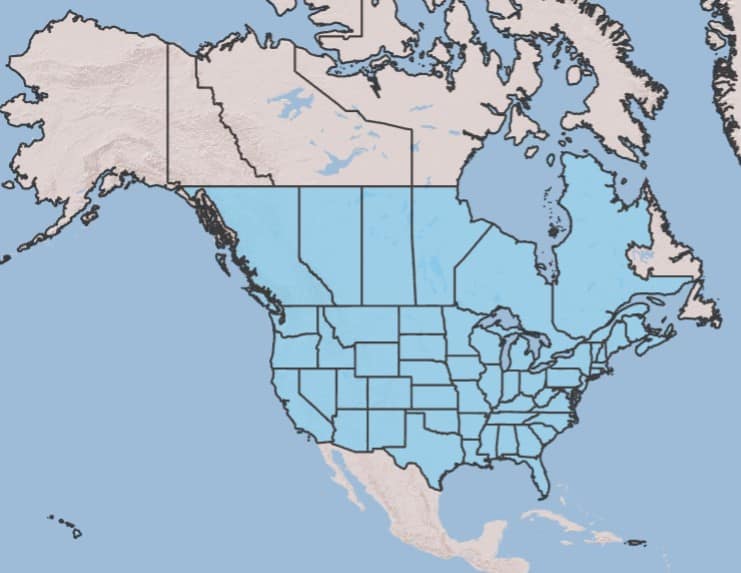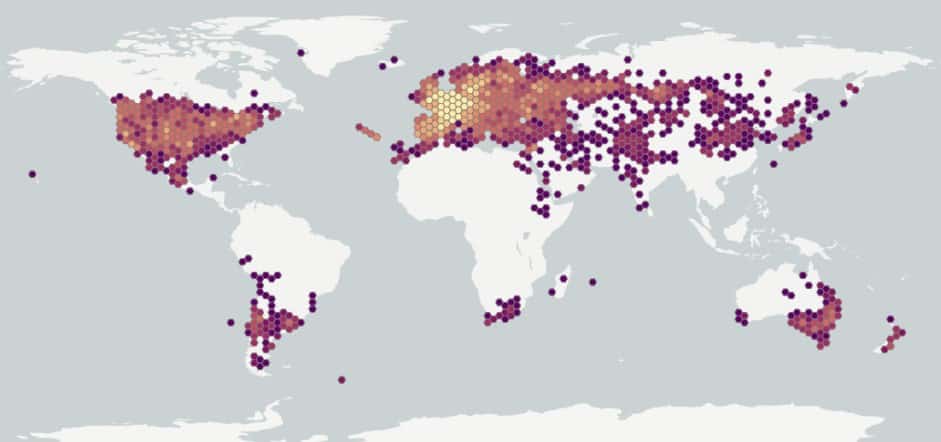Convolvulus arvensis
Overview
Aperçu
Regulation :
Remarques Réglementation:
- CFIA Weed Seeds Order - Class 2: Primary Noxious Weed Seeds
- USA Federal Noxious Weed Seed List
Regulation Notes:
Distribution :
Répartition :
The species is native to northern Africa, Europe and Asia, where its distribution extends north to Siberia and south to Pakistan and Nepal (USDA-ARS 2021). It is introduced to North and South America, Australia and New Zealand (CABI 2021). It is widespread in the United States, except for some southern states (Weaver and Riley 1982). In Canada this species occurs throughout the country except for Newfoundland, Yukon, Nunavut and the Northwest Territories (Brouillet et al. 2010+).
Habitat and Crop Association :
Habitat et Cultures Associées :
Cultivated fields, old fields, pastures, gardens, fencelines, roadsides and other disturbed areas (Darbyshire 2003). A weed of 32 different crops in 44 countries, including Triticum aestivum subsp. aestivum (wheat), Hordeum vulgare subsp. vulgare (barley), Zea mays subsp. mays (corn), Beta vulgaris subsp. vulgaris (sugarbeet), vegetables, Gossypium hirsutum (cotton), Nicotiana tabacum (tobacco), Solanum tuberosum (potato), Ananas comosus (pineapple), Linum usitatissimum (flax), Medicago sativa (alfalfa), vineyards, and Citrus spp. (citrus) crops ( Weaver and Riley 1982; Holm et al. 1991; CABI 2021).
Economic Use, cultivation area, and Weed Association :
Utilisation économique, zone de culture et association de mauvaises herbes :
Duration of Life Cycle :
Durée du cycle vital:
Perennial
Dispersal Unit Type :
Type d’unité de dispersion :
Seed
General Information
RENSEIGNEMENTS GÉNÉRAUX
Convolvulus arvensis was introduced from Europe to the United States in the 18th century (Weaver and Riley 1982). The seeds are dispersed in water, farm machinery and as a contaminant of crop seeds (Weaver and Riley 1982; Holm et al. 1991). Seeds can also be dispersed long-distance in the stomachs of migrating birds (Holm et al. 1991).
C. arvensis grows best in fertile, well drained soils, but can withstand drought due to the extensive root system (Weaver and Riley 1982; Holm et al. 1991). Plants generally outcompete crop plants under water stress, but are sensitive to shading by taller plants even under adequate moisture (Holm et al. 1991; CABI 2021).
Seed production ranges from 25 to 300 seeds per plant, depending on moisture and light conditions (Weaver and Riley 1982). This species has a generally poor seed set, with seeds not maturing in wet conditions or soils under frequent cultivation (Weaver and Riley 1982). Seeds can remain viable in the soil for over 20 years (Holm et al. 1991).
.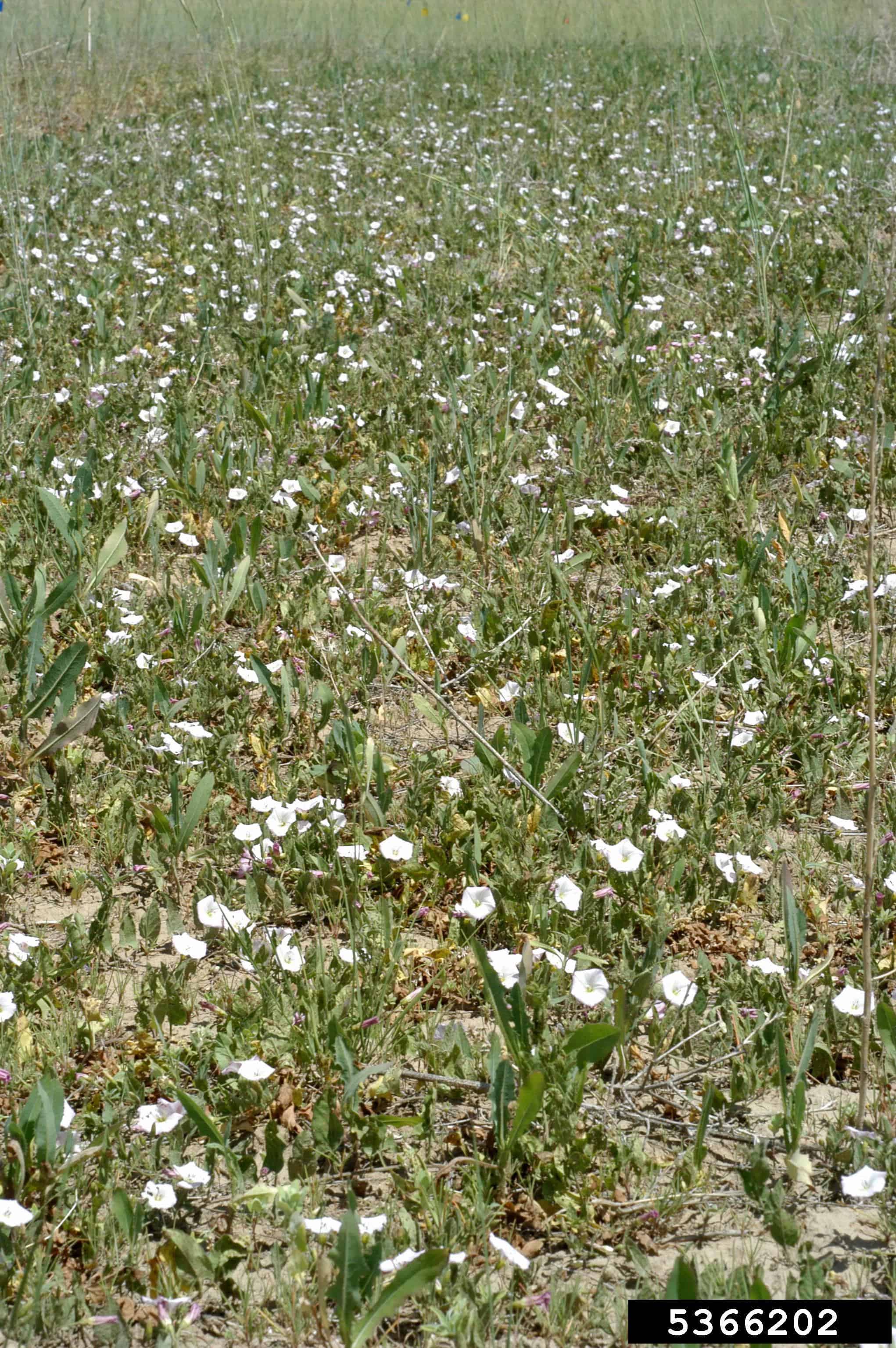
Convolvulus arvensis infestation (K. George Beck and James Sebastian, Colorado State University, Bugwood.org)
Identification
Identification
-
Capsule
Size
- Capsule length: 5.0 – 8.0 mm (eFloras 2021)
Shape
- Capsule is globose or cone shaped
Surface Texture
- Capsule surface is smooth
Colour
- Mature capsules are straw-yellow coloured
Other Features
- Capsule is two-chambered and contains 1-4 seeds (Weaver and Riley 1982)
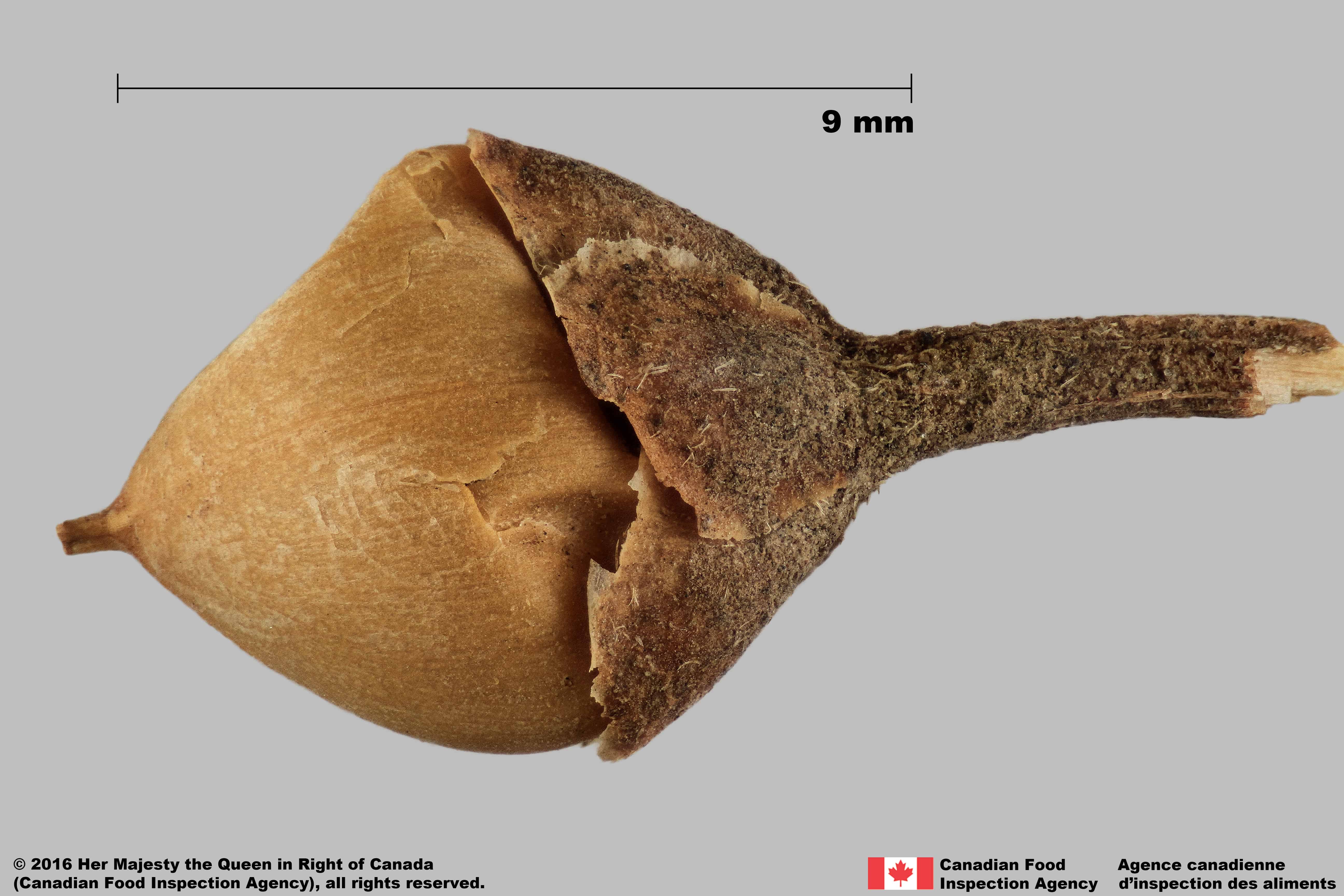
Convolvulus arvensis capsule

-
Seed
Size
- Seed length*: 3.0 – 5.0 mm; width: 2.7 – 3.7 mm
*Note: minimum and maximum of 20 seeds in a normal range of this species using image measurement (ISMA 2020)
Shape
- Seed is generally sectoroid shaped, some seeds are inflated oval shaped
Surface Texture
- Seed surface generally with dense irregular tubercles
- Some seeds may have sparse tubercles, or rarely no tubercles
- Portions of the surface layer may be worn down during processing exposing a smooth seed coat
Colour
- Seed surface dull greyish-brown, brown, dark brown or rarely orange with light brown tubercles
- Exposed seed coat is shiny orangish coloured
Other Features
Hilum and hilum area
- The hilum is at one end of the seed surrounded by a raised area
- The hilum is generally rectangular, but some are oval or oblong-shaped
- There is a fissure at the edge of the hilum area, generally straight, but some are curved
Other than hilum
- Immature seeds have a smooth surface and are light orange or yellow coloured
- The number of seeds in the capsule determine the shape; sectoroid seeds result from a multiple seeded capsule, an inflated seed comes from a single-seeded capsule (Weaver and Riley 1982).
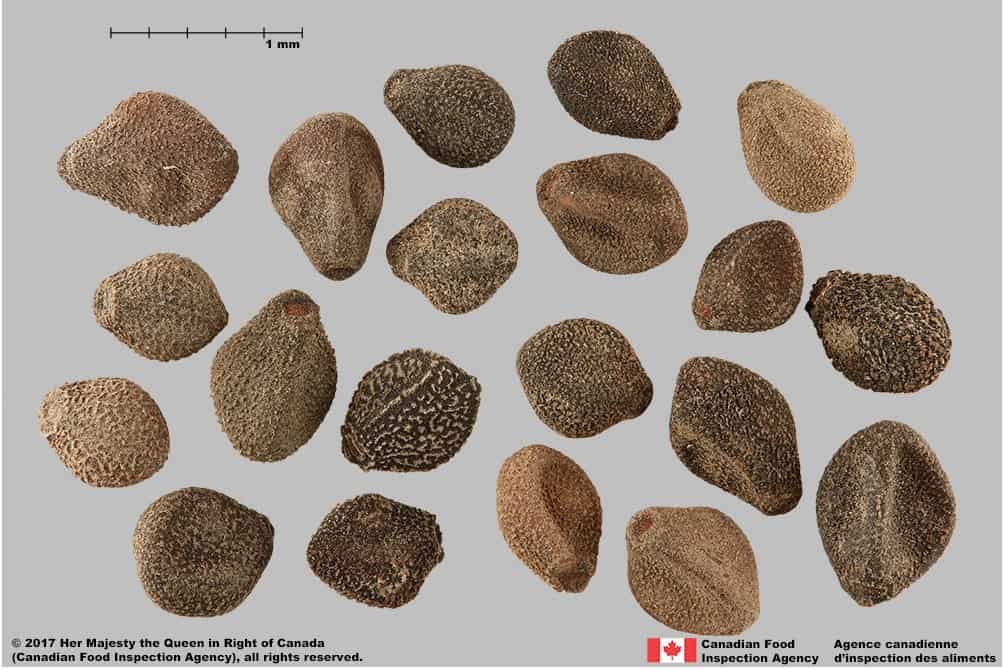
Field bindweed (Convolvulus arvensis) seeds

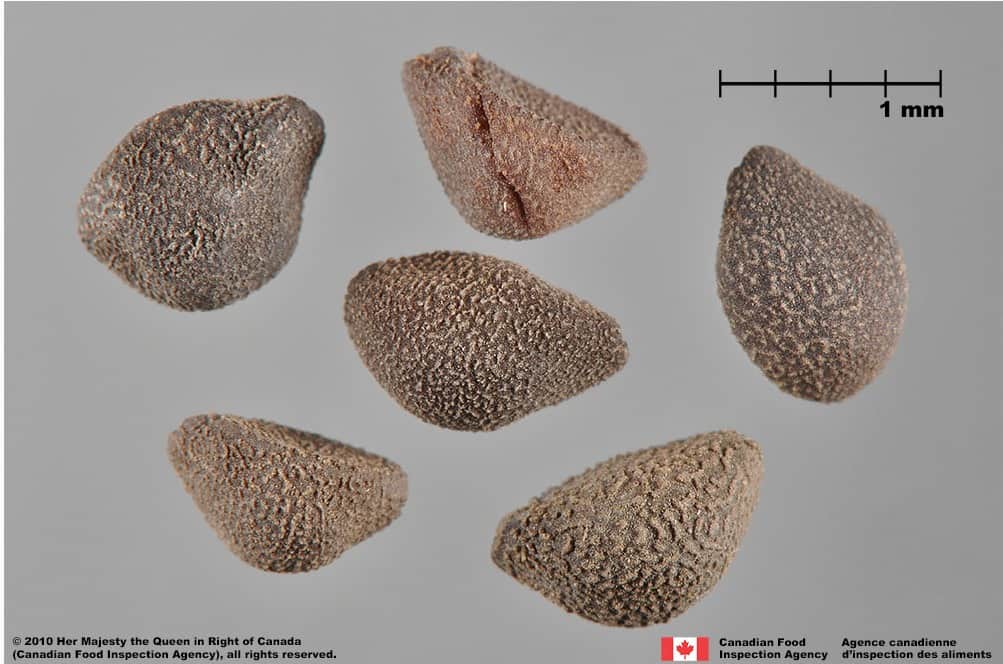
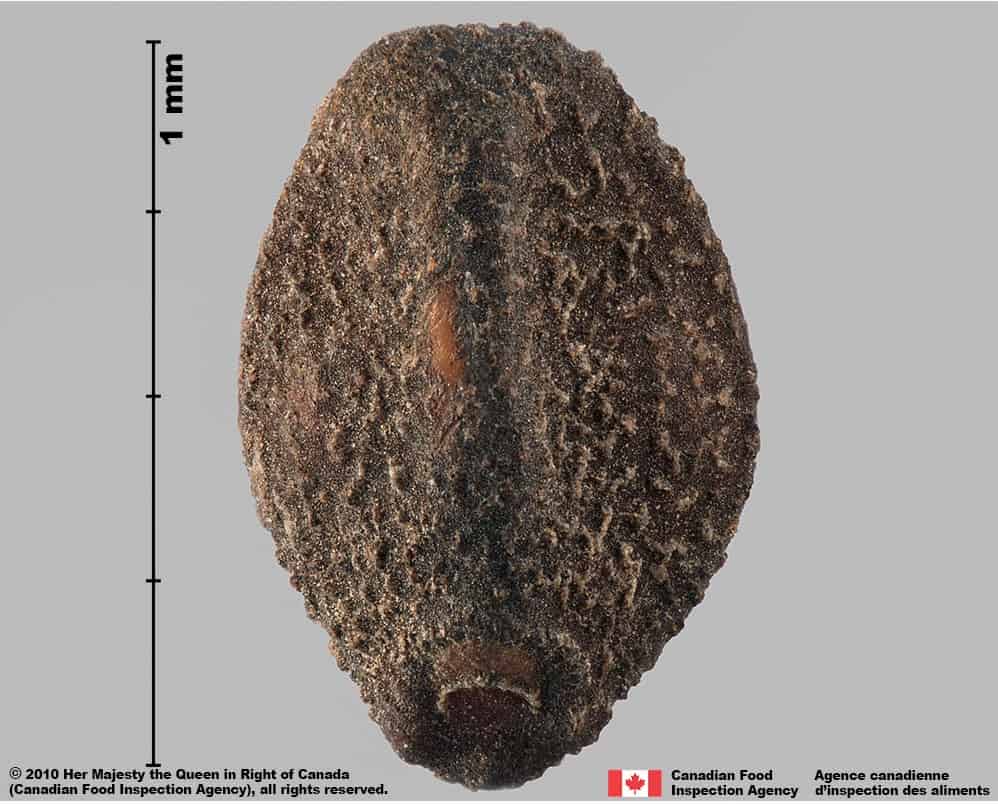
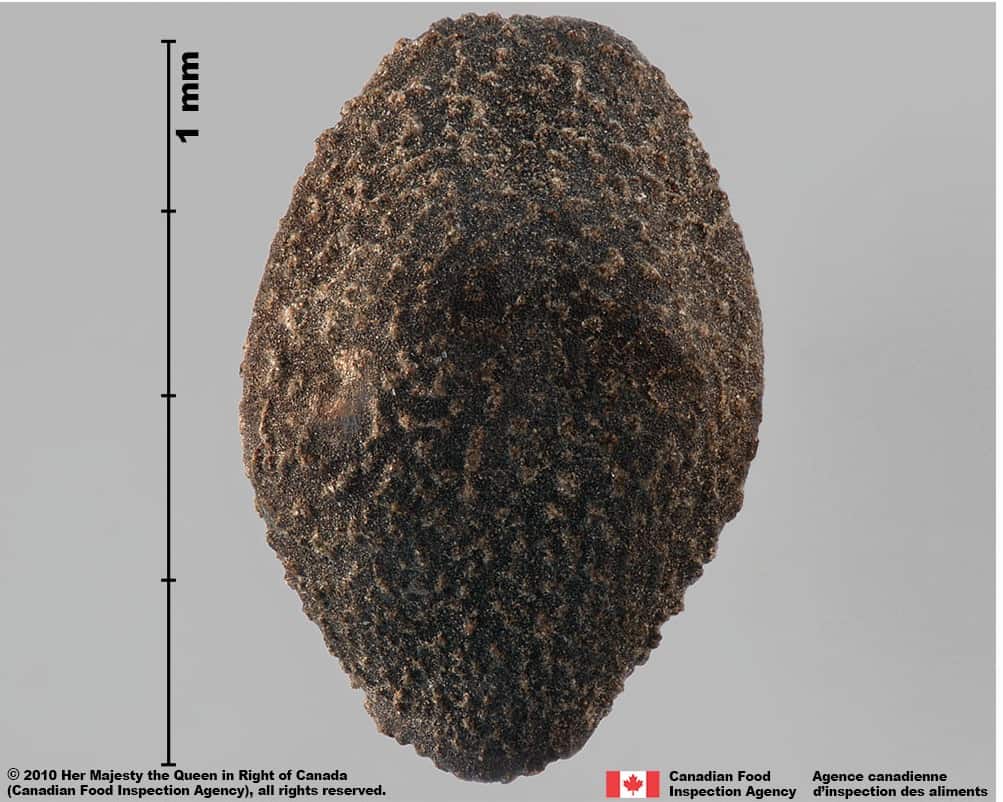
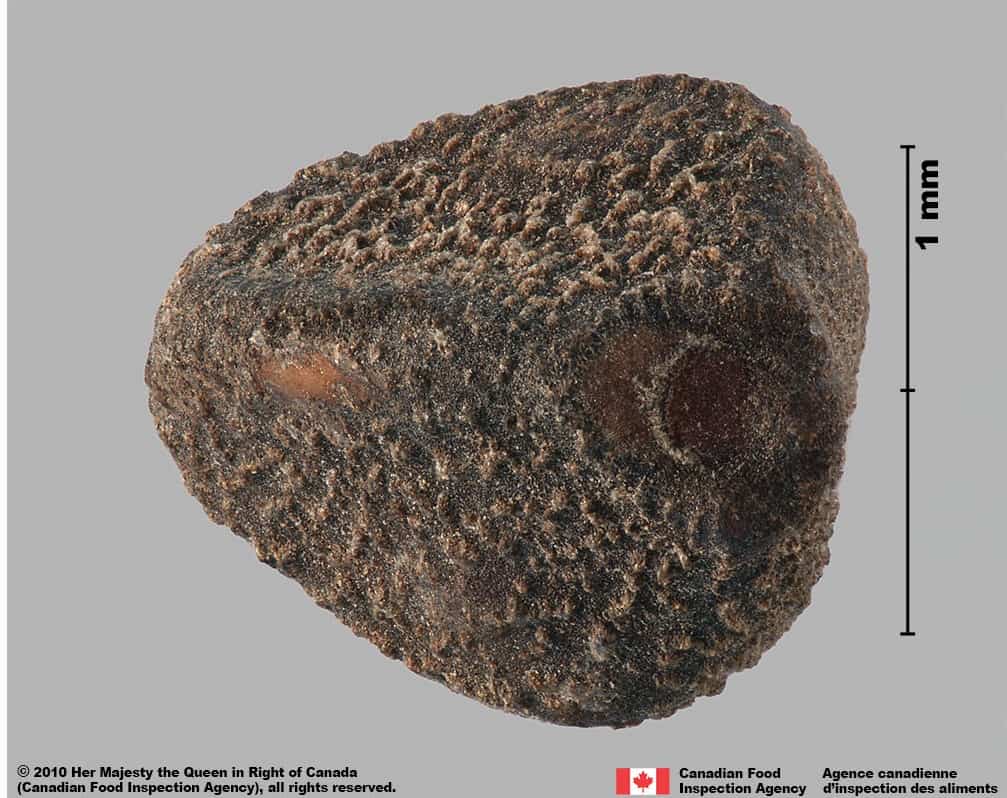
-
Embryo
Size
- Embryo fills the seed
Shape
- Embryo is irregularly folded in the seed
Endosperm
- Endosperm is hard and translucent
Other Features
- Embryo is in an axial position

Field bindweed (Convolvulus arvensis) seed, longitudinal section

Identification Tips
CONSEILS POUR L’IDENTIFICATION
Convolvulus arvensis seeds are generally sectoroid shaped, along with many other species in the Convolvulaceae. Seeds of genera in this family can be generally distinguished by their general size and surface texture. Seeds of Convolvulus species are medium sized in the family, and have a distinctive surface texture of irregular tubercles.
Seeds of C. arvensis can be larger than other Convolvulus species, with tubercles of a medium height. For example, C. althaeoides seeds are shorter with higher, and more dense tubercles in edge view, and C. equitans seeds are a similar size to C. arvensis, but have more sparse and lower-profile tubercles.

Field bindweed (Convolvulus arvensis) seeds





Additional Botany Information
AUTRES RENSEIGNEMENTS BOTANIQUES
Flowers/Inflorescence
- Flower is white to pink, funnel-shaped with a diameter of 2.0 – 2.5 cm and length of 1.5 – 2.0 cm (Weaver and Riley 1982)
- Flowers are receptive to pollination for one day (Weaver and Riley 1982)
Vegetative Features
- Twining growth form with leaves attached alternately (Weaver and Riley 1982)

Convolvulus arvensis flowers (Joseph M. DiTomaso, University of California – Davis, Bugwood.org)

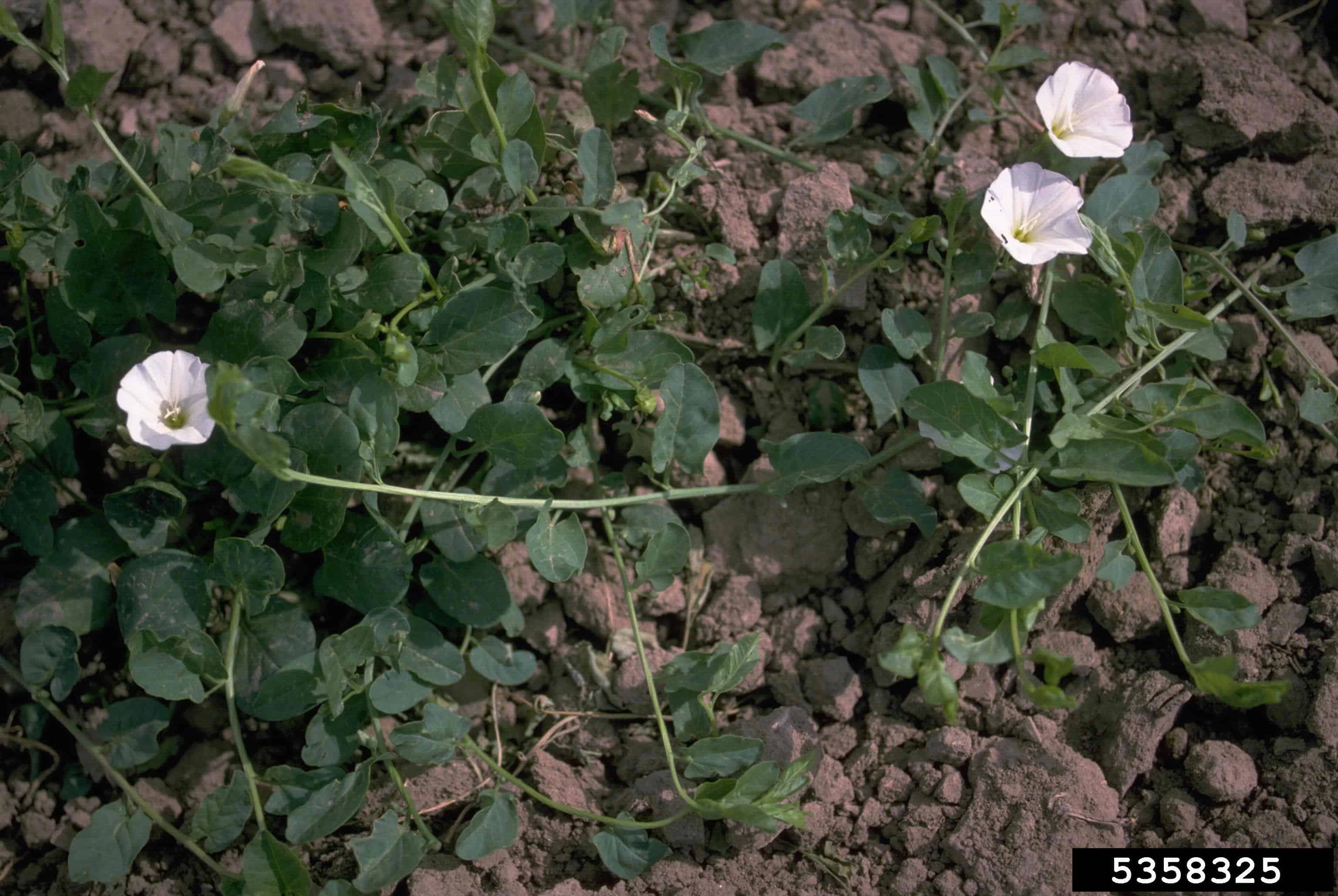

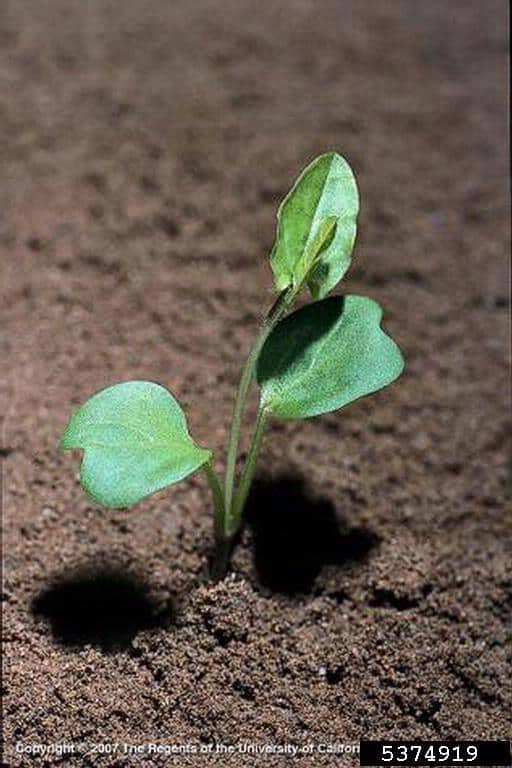
Similar Species
ESPÈCES SEMBLABLES
Similar species are based on a study of seed morphology of various species, and those with similar dispersal units are identified. The study is limited by physical specimen and literature availability at the time of examination, and possibly impacted by the subjectivity of the authors based on their knowledge and experience. Providing similar species information for seed identification is to make users aware of similarities that could possibly result in misidentification.
Calystegia sepium (L.) R. Br. (hedge bindweed)
Calystegia sepium seeds (length*: 3.7 – 5.2 mm; width: 3.2 – 4.1 mm) are generally larger than C. arvensis but their ranges overlap. C. sepium seeds have a humped profile in edge-view, with smaller, more sparse tubercles close to the surface and a D-shaped hilum with a U-shaped fissure.
*Note: minimum and maximum of 20 seeds in a normal range of this species using image measurement (ISMA 2020)
Click to select species
Cliquez pour sélectionner les espèces
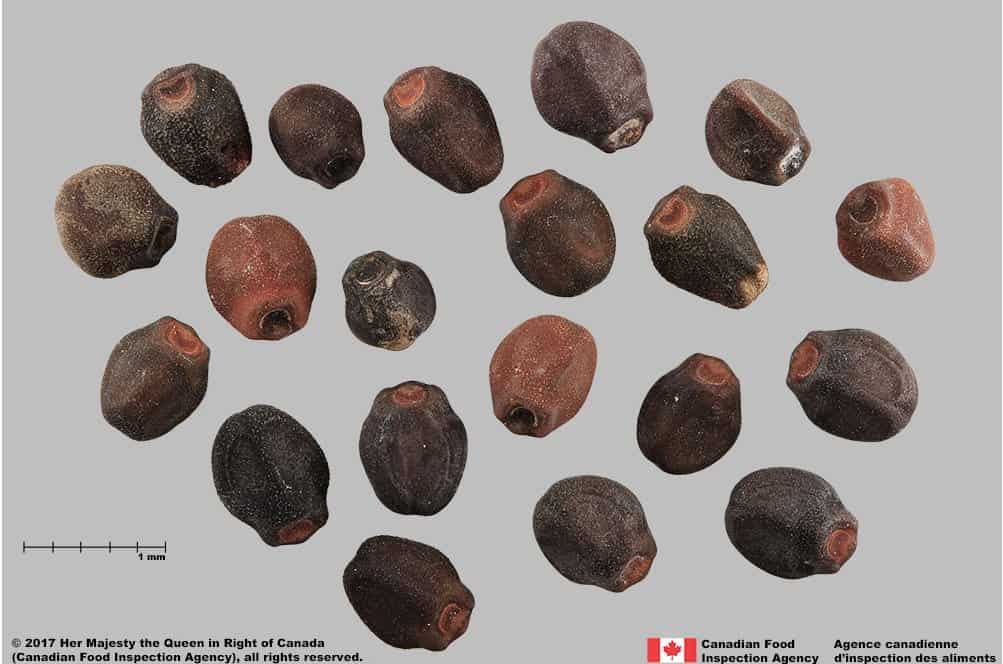
Calystegia sepium
Comparison Window
Fenêtre de comparaison
MAIN SPECIES
ESPÈCES PRINCIPALES
Convolvulus arvensis

Convolvulus arvensis
Convolvulaceae
Field bindweed (Convolvulus arvensis) seeds
MAIN SPECIES
ESPÈCES PRINCIPALES
Convolvulus arvensis

Convolvulus arvensis
Convolvulaceae
Field bindweed (Convolvulus arvensis) seeds
MAIN SPECIES
ESPÈCES PRINCIPALES
Convolvulus arvensis

Convolvulus arvensis
Convolvulaceae
Field bindweed (Convolvulus arvensis) seed
MAIN SPECIES
ESPÈCES PRINCIPALES
Convolvulus arvensis

Convolvulus arvensis
Convolvulaceae
Field bindweed (Convolvulus arvensis) seed
MAIN SPECIES
ESPÈCES PRINCIPALES
Convolvulus arvensis

Convolvulus arvensis
Convolvulaceae
Field bindweed (Convolvulus arvensis) seed
MAIN SPECIES
ESPÈCES PRINCIPALES
Convolvulus arvensis

Convolvulus arvensis
Convolvulaceae
Convolvulus arvensis capsule
SIMILAR SPECIES
ESPÈCES SEMBLABLES
Calystegia sepium

Calystegia sepium
Convolvulaceae
Hedge bindweed (Calystegia sepium) seeds
SIMILAR SPECIES
ESPÈCES SEMBLABLES
Calystegia sepium
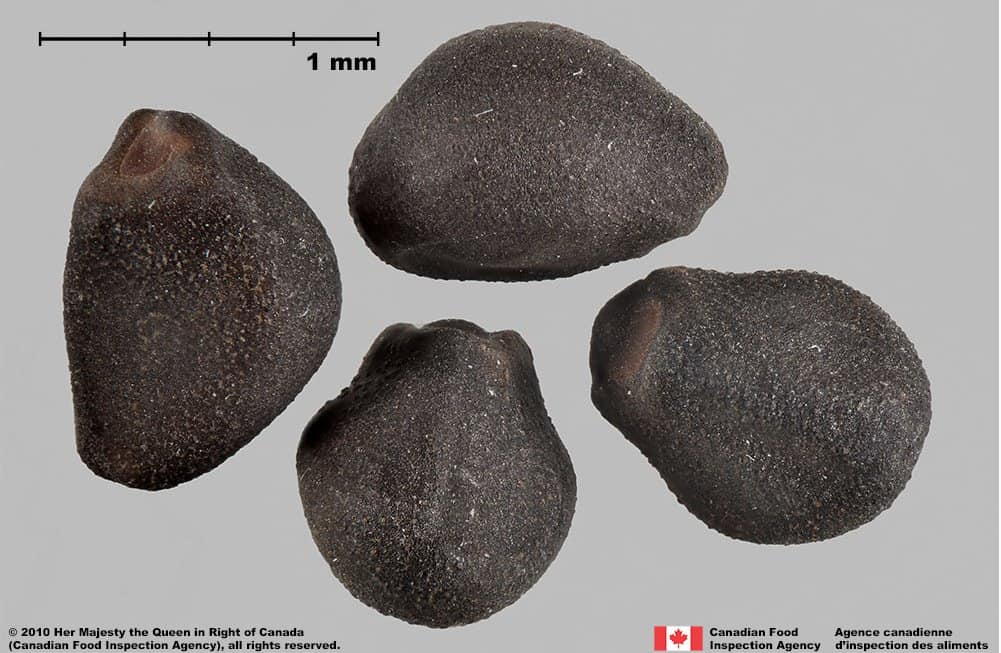
Calystegia sepium
Convolvulaceae
Hedge bindweed (Calystegia sepium) seeds
SIMILAR SPECIES
ESPÈCES SEMBLABLES
Calystegia sepium
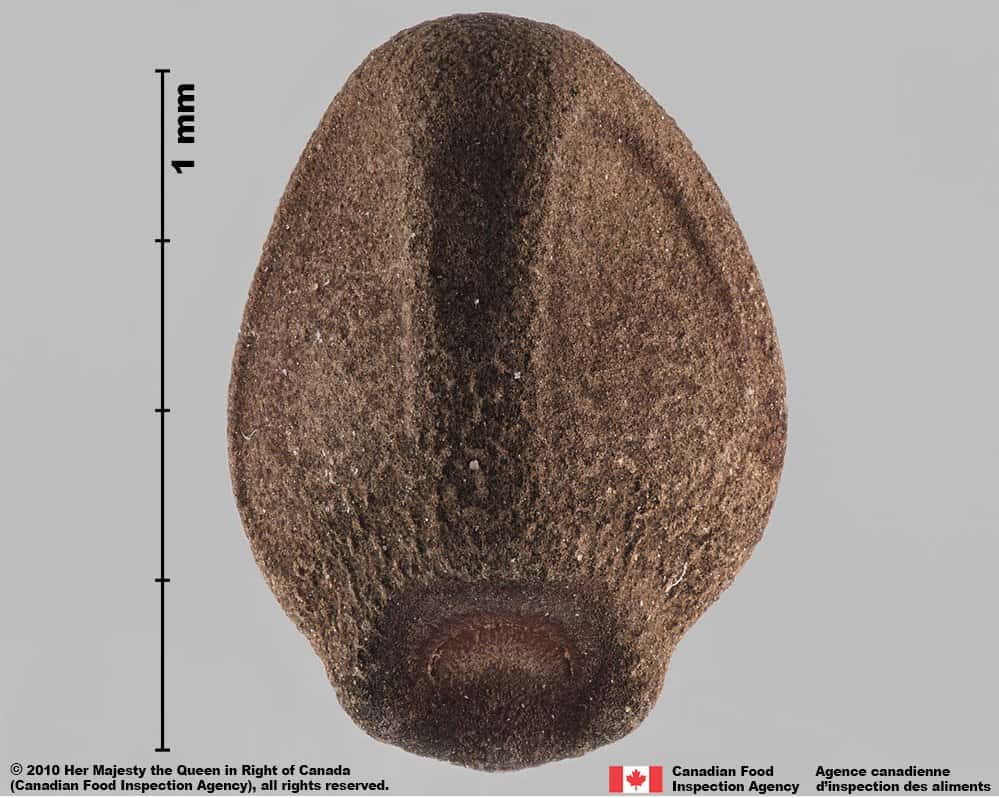
Calystegia sepium
Convolvulaceae
Hedge bindweed (Calystegia sepium) seed
SIMILAR SPECIES
ESPÈCES SEMBLABLES
Calystegia sepium
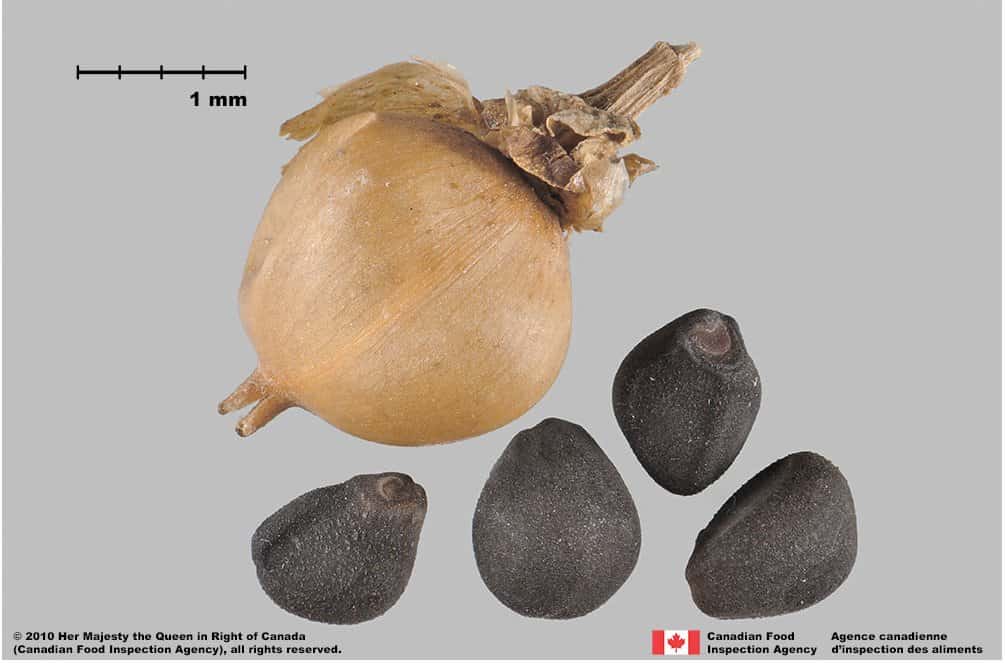
Calystegia sepium
Convolvulaceae
Hedge bindweed (Calystegia sepium) capsule and seeds
Need ID Help?
Besoin d’aide pour l’identification?
Reference(s)
Référence(s)
Brouillet, L., Coursol, F., Meades, S. J., Favreau, M., Anions, M., Bélisle, P. and Desmet, P. 2010+. VASCAN, the database of vascular plants of Canada. http://data.canadensys.net/vascan/ Accessed April 29, 2021.
Centre for Agriculture and Bioscience International (CABI). 2021. Invasive Species Compendium, CAB International, Wallingford, UK. https://www.cabidigitallibrary.org/journal/cabicompendium Accessed December 24, 2021.
Darbyshire, S. J. 2003. Inventory of Canadian Agricultural Weeds. Agriculture and Agri-Food Canada, Research Branch. Ottawa, ON.
eFloras. 2021. Electronic Floras. Missouri Botanical Garden, St. Louis, MO & Harvard University Herbaria, Cambridge, MA., http://www.efloras.org Accessed December 24, 2021.
Global Biodiversity Information Facility (GBIF) Secretariat. 2022. https://doi.org/10.15468/39omei Accessed via https://www.gbif.org/species/2928390 Accessed December 29, 2022.
Government of Canada (GC). 2016. Canadian Weed Seeds Order. https://laws-lois.justice.gc.ca/eng/regulations/SOR-2016-93/page-2.html (English) https://laws-lois.justice.gc.ca/fra/reglements/DORS-2016-93/page-2.html (French)
Holm, L.G., Plucknett, D.L., Pancho, J.V. and Herberger, J.P. 1991. The World’s Worst Weeds: Distribution and Ecology. Krieger Publishing Company, Florida, 609 pp.
International Seed Morphology Association (ISMA). 2020. Method for Seed Size Measurement. Version 1.0. ISMA Publication Guide. https://www.idseed.org/authors/details/method_for_seed_size_measurement.html
Tropicos. 2022. Missouri Botanical Garden. https://tropicos.org Accessed March 09, 2022.
U.S. Department of Agriculture-Agricultural Research Services (USDA-ARS). 2021. Germplasm Resources Information Network (GRIN), https://npgsweb.ars-grin.gov/gringlobal/taxon/taxonomysimple.aspx Accessed December 24, 2021.
U.S. Department of Agriculture-Natural Resources Conservation Service (USDA-NRCS). 2022. The PLANTS Database. National Plant Data Team, Greensboro, NC USA. http://plants.usda.gov Accessed December 29, 2022.
Weaver, S. E. and Riley, W. R. 1982. The biology of Canadian weeds. 53. Convolvulus arvensis L. Canadian Journal of Plant Science 62: 461-472.



